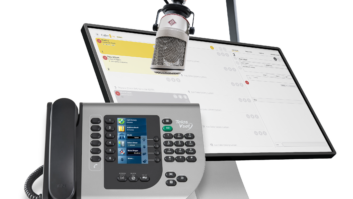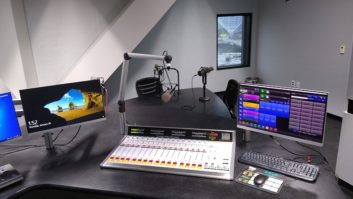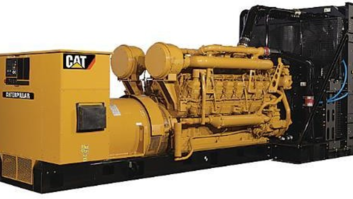A Veteran Engineer and Sales Executive Offers Tips on Broadcast Equipment Capital Spending
We all know that broadcast companies have come of age. No longer part of a mom and pop industry, these firms can and do function as large corporate entities.
Many things have changed dramatically in the way such organizations operate: new ways to program, new ways to sell time, new ways to maximize staff.
But few groups have revised the way they purchase capital equipment. With one notable exception, most are still using the same CAP-X processes that they used when they were single-station ownerships.
Let me review the process as it has existed and, in many cases, still stands.
1. The local station develops a capital requirement list. Usually this list covers only the coming year. There is often little consideration given to planning beyond the immediate future.
2. The individual budgets are sent to the local manager, director of engineering or regional engineers for trimming and compiling.
3. Repeat steps 1 and 2 as necessary.
4. The budget is approved for the next year.
5. The approved budget goes back to the individual station, where the local chief engineer selects the vendor and makes the purchase.
Now that it is back at the station, the chief engineer, has the chance to affect the purchasing process. Because the chief is diligent, with an eye on the bottom line, he or she probably will bid out the purchases to multiple vendors to try to get the best price.
On items like microphones, processors and other studio gear, the local engineer doesn’t buy in enough volume to drive the price down to where it might be if volume were a factor.
With large items, such as transmitters or antennas, you the engineer have a different problem. Competitive bidding is difficult because you are selecting an item that has specific performance characteristics. Once the vendor realizes that you really want his product (and they always know), the local engineer and even the manager are at a severe negotiating disadvantage. And even if they are the best negotiators, they will only be negotiating for one item.
With this process, the only thing that can be managed is the individual purchase. Groups with large spending potential should be managing the purchasing process.
You need to manage the way you work with your vendors.
Note that I said vendors, not vendor. Exclusivity is not the key; purchase management is.
Buy smart
Let me suggest another purchasing model that you might use to maximize your spending.
It starts the same way as the old method. You can’t cut the local station out of the loop. It is, after all, their need.
But after you have approved the CAP-X, don’t just send it back to the local station. Compile a list of each requested item. You will find that you have 30 or 40 of some items. Often these are microphones, voice processors, codecs, phone hybrids and more.
Such quantities easily qualify for many manufacturers’ quantity price breaks, which you can then negotiate with the distributor to pass back to you through lower prices. Some smaller manufacturers may even work directly with you for those quantity purchases.
With larger items, such as transmitters, towers and antennas, you have much greater purchasing power than you realize. During normal, non-HD Radio conversion times, the largest transmitter manufacturers in the country sell only about 350 to 400 transmitters domestically. If you are planning to purchase 10 or even five transmitters during the course of the year, you might represent 3 to 5 percent of sales. You can negotiate a much lower price by aggregating your annual purchases.
In addition to lower price, you often can get additional concessions such as technical training, extended warranties and shipping. You probably are negotiating these kinds of discounts for computers and other office supplies for which you have much less purchasing leverage.
If you are concerned that you might not be purchasing some of the items because of cash flow issues or contingency plans, you should still negotiate for the maximum number you might be able to purchase. Just include a penalty clause if you fall short of the number you originally estimated. You will still save money and the vendor might forget to ask for the penalty. You can still manage your cash flow and get the best price.
Benefits to all
With this purchasing plan, everyone wins:
You benefit because your company gets the best price and your local engineer gets the item he wants.
The distributor benefits because he has a better knowledge of where his orders are coming from and when they will appear. He can negotiate better pricing from manufacturers because he can take advantage of large-quantity incentives offered by manufacturers as well as promotions that are offered. He gets better control of his cash flow and inventory management. You also allow him to help you by giving him the knowledge of when you need certain items that periodically become hard to deliver. You enable your distributors to help you get the equipment you need at the prices you want.
The manufacturers benefit as well. They are able to better manage inventories. They can provide you with items when you need them, not when their production schedules allows.
Transmitter and large equipment manufacturers in particular benefit from this ability to control inventory and demand. They too can take advantage of quantity price breaks from their parts suppliers. Discounts for 50 kW power supply transformers mount up pretty fast, and copper pricing changes daily. Any advance notice the manufacturer can get is an opportunity for savings for you. Again, everyone wins.
You might also be able to develop some kind of simplified billing process with the vendor that allows you to process fewer payments. The average internal cost to process a vendor payment seems to be around $75 per payment. If you could reduce the number of invoices you pay by 100, you could get a lot more productivity out of your accounts payable department.
The short list
You can take vendor management further and try to minimize the number of vendors you use. This may or may not work for you. It has been tried with varying success by several groups.
It has several drawbacks.
First is the nagging feeling that you are putting all your eggs in one basket.
Second, you might be restricting the ability of your local engineer to work with the products he feels are best for his application. You are paying this person for his technical knowledge; it is probably ill advised to ignore it.
Third, technical innovation and leadership tend to shift back and forth between manufacturers. You don’t want to put yourself into a position of being slow to respond because you are locked into the habit of buying from one company only.
So you can have your cake and eat it. You can get low prices with minimal commitment and with little change in the way you operate. All you have to do is get a little more savvy about the way broadcast manufacturers and vendors work.
You probably have an engineer in your organization who has been trying to get someone to listen to a similar plan. Talk with him. Give him the responsibility of doing the organizational work. Let him negotiate with the vendors. You might even want to offer some kind of bonus based on savings.
This process can be implemented without creating a “purchasing” department for most groups. If you really are big enough, with sufficient capital spending, you might consider creating a position to oversee the process. The size of your CAP-X and the savings you think you can reap will dictate whether this has value.
One thing is definite: Managing the purchasing process can yield significantly greater savings than managing a purchase.
In broadcasting engineering for 30 years, the author has worked as a radio chief engineer, video facility manager and equipment sales executive. As the first national account manager for a large manufacturer, he spent many years viewing the capital spending process. He is now domestic sales manager for Logitek.
RW welcomes other points of view.












